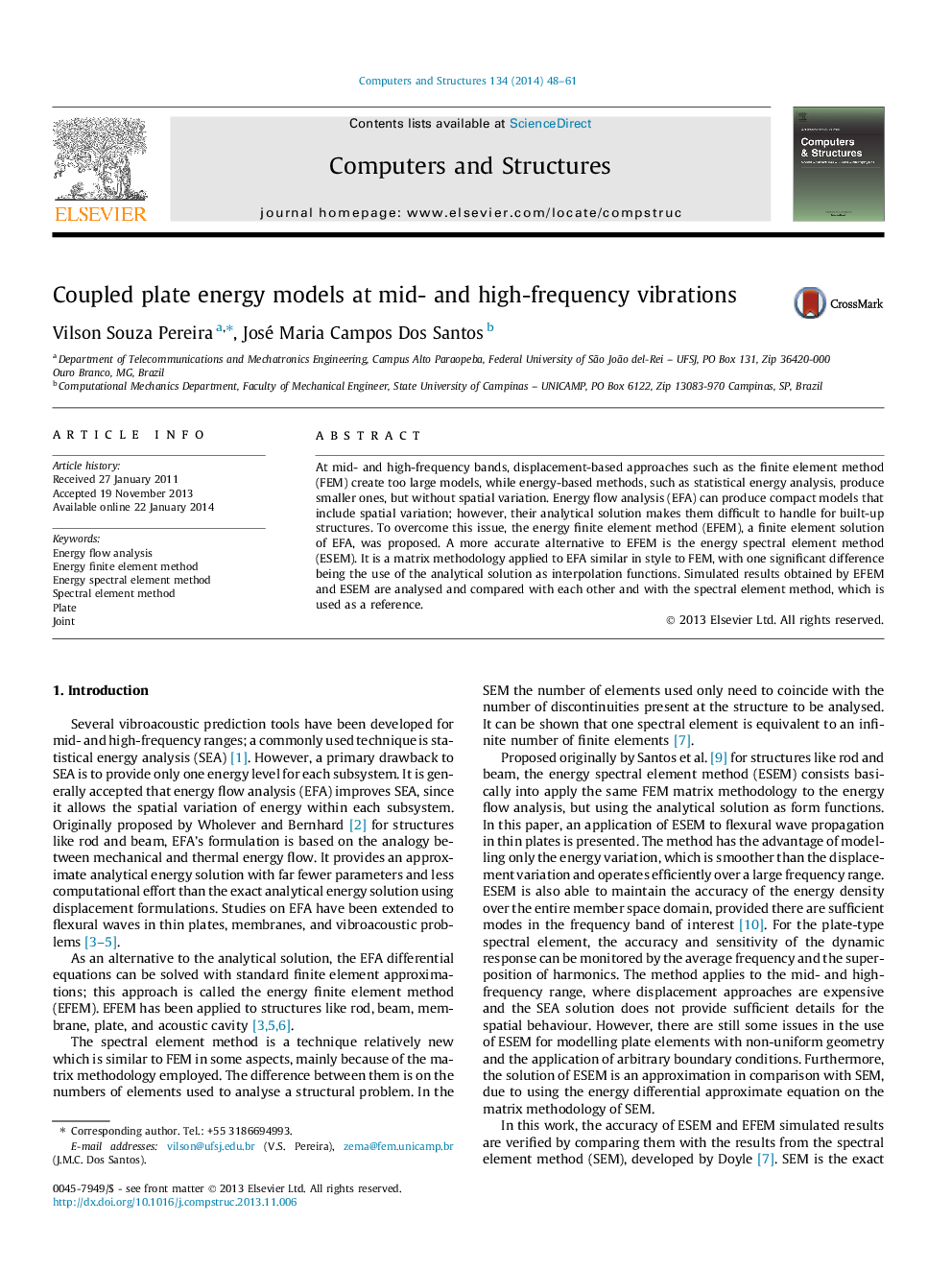| Article ID | Journal | Published Year | Pages | File Type |
|---|---|---|---|---|
| 510977 | Computers & Structures | 2014 | 14 Pages |
•An extension of the ESEM to flexural wave propagation in thin plates is presented.•It is a matrix methodology applied to EFA similar in style to FEM.•A more accurate alternative to EFEM is the energy spectral element method (ESEM).•Simulated results obtained by EFEM and ESEM are analysed and compared with the SEM.•Energy methods based on energy flow and displacement for a thin plate are reviewed.
At mid- and high-frequency bands, displacement-based approaches such as the finite element method (FEM) create too large models, while energy-based methods, such as statistical energy analysis, produce smaller ones, but without spatial variation. Energy flow analysis (EFA) can produce compact models that include spatial variation; however, their analytical solution makes them difficult to handle for built-up structures. To overcome this issue, the energy finite element method (EFEM), a finite element solution of EFA, was proposed. A more accurate alternative to EFEM is the energy spectral element method (ESEM). It is a matrix methodology applied to EFA similar in style to FEM, with one significant difference being the use of the analytical solution as interpolation functions. Simulated results obtained by EFEM and ESEM are analysed and compared with each other and with the spectral element method, which is used as a reference.
